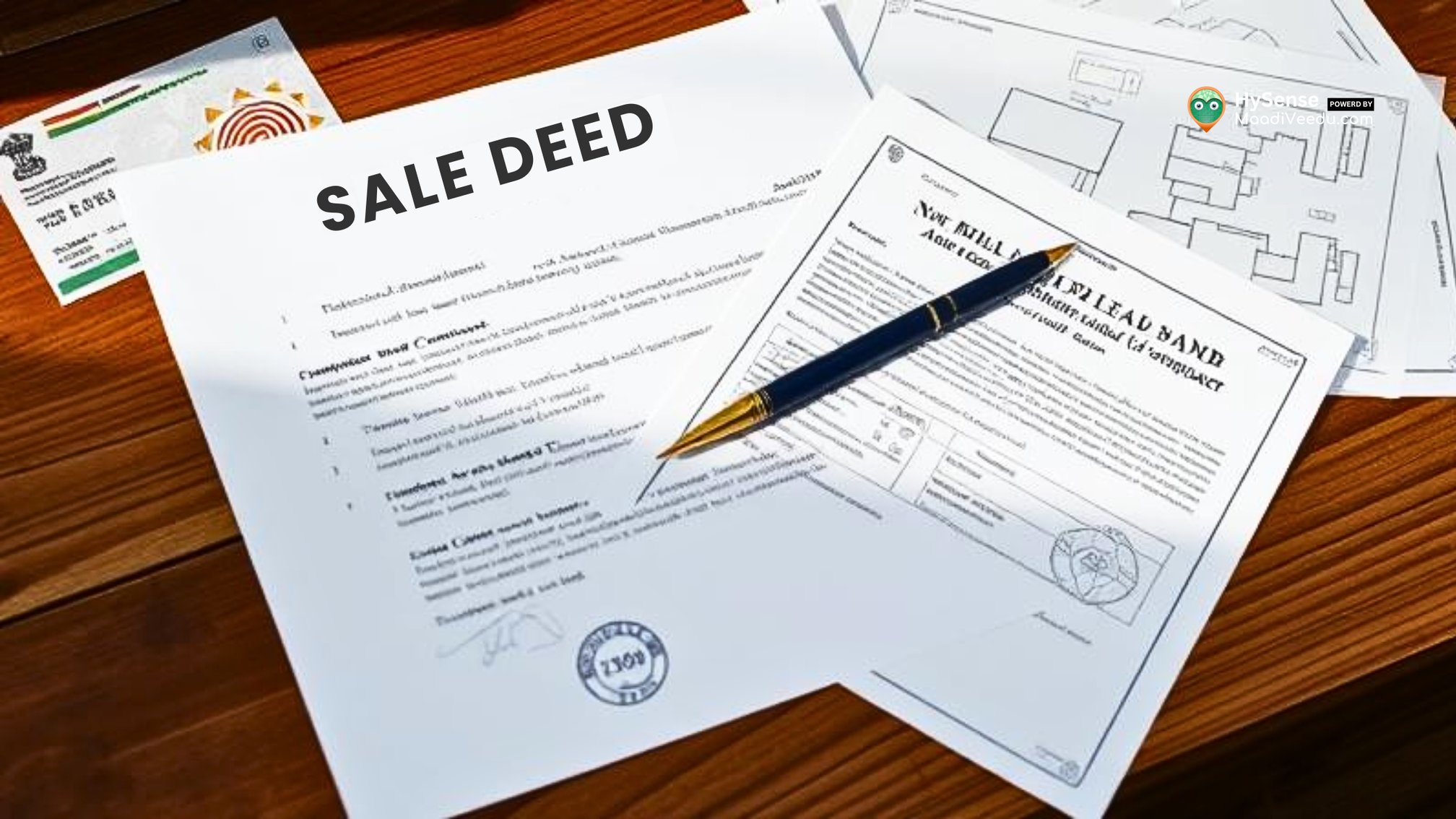Buying a Mortgage Property – 5 Key Reasons to Make a Careful Decision
Buying a mortgage property? Learn key checks, risks, and steps to safely purchase a home with an existing loan for a smart, secure deal.
Table of Contents
Have you ever come across a resale property that seems perfect — but the owner mentions there’s still a bank loan pending on it?
Many homebuyers stop right there, worried about the “loan complication.” But here’s a surprising truth:
Buying a property with an existing mortgage isn’t rare — it’s one of the most common resale scenarios in today’s real estate market.
However, it’s also one of the most sensitive transactions you can make. The decision impacts your finances, ownership rights, and peace of mind for years to come.
So before you sign on the dotted line, let’s understand what a mortgage property really means, how it works, and what to check before making the purchase.
To better understand how such transactions work, you can browse verified resale and mortgage property listings available on trusted online portals.
What Is a Mortgage Property?
A mortgage property (also called a property with an outstanding home loan) is a property being sold by an owner who has not yet fully repaid their bank loan.
In a normal sale:
- The seller owns the property fully and holds all original documents like Sale Deed and Mother Deed.
In a mortgage sale:
- The bank holds the original papers until the seller clears the loan.
- So as a buyer, your payment not only goes to the seller but also helps clear the bank’s loan to release the property.
It’s a three-party (tripartite) deal — between you, the seller, and the bank.
Is It Smart to Buy a Mortgage Property?
Yes, it can be — if you handle it carefully.
Buying such a property isn’t a bad idea at all; in fact, it can often give you access to prime areas at better prices. But you must balance risk, timing, and paperwork.
Let’s look at the pros and cons before you decide.
The Advantages of Buying a Mortgage Property
Legal Safety Check
Since a bank already approved a loan on the property, it means the title was verified once. This gives an additional layer of legal confidence.
Still, always conduct your own legal due diligence.
Chance for a Better Deal
Sellers with ongoing loans may need urgent funds or relocation.
This “distress sale” situation can help you negotiate below market value, especially in cities like Chennai, Bengaluru, or Hyderabad.
Ready-to-Move Homes
Unlike under-construction projects, these homes are already built. You can start living or earning rent immediately after purchase.
Developed Locations
Mortgage resale properties are often in well-established localities with schools, water, and road access — unlike new layouts still developing.
The Drawbacks You Should Know
Complicated Paperwork
Banks hold the original documents until full payment.
You’ll need a Foreclosure Letter and List of Documents (LOD) from the bank before proceeding — any delay from the seller’s side can slow down your deal.
The Funding Gap Problem
Suppose the property price is ₹50 Lakhs, but the seller owes ₹30 Lakhs to the bank.
You must coordinate how to:
- Pay ₹30 Lakhs to the bank (to close the loan), and
- Pay ₹20 Lakhs to the seller.
- This requires clear timing and legal safeguards.
Unexpected Bank Charges
Banks may impose foreclosure or prepayment penalties. Some sellers might try passing these costs to you — clarify this upfront in writing.
5 Key Reasons to Make a Careful Decision
Before finalizing any mortgage property, evaluate these five critical points.
1. Check the Debt-to-Value Ratio
If the seller owes more to the bank than the home’s current market value, it’s called negative equity.
Example: The loan balance is ₹60 Lakhs, but the property is worth ₹50 Lakhs now.
You could end up overpaying. Always get an independent valuation before agreeing on a price.
2. The “Assumable Loan” Myth
You cannot simply take over the seller’s EMI.
In most Indian banks, loans are not directly transferable. You’ll have to apply for a new loan under your own name and credit score.
3. Document Release Timeline
After the seller clears the loan, the bank usually takes 7–21 days to release the original documents.
You must have a legal agreement to protect your payment during this waiting period. Never release full payment before getting the documents.
4. Check Outstanding Dues
Even if EMIs are paid, other bills might not be.
Always verify there are no pending:
- Property taxes
- Water and sewage bills
- Maintenance dues to the association
- Electricity bills
- These dues transfer to you after registration.
5. Inspect the Property’s Condition
Financial stress can lead owners to neglect maintenance.
Before buying, inspect for leakages, cracks, and wiring faults.
A property might look fine on paper but need repairs worth lakhs.
New to housing loans? Read also: How to Get a Home - Loan - and What Is the Interest Rate?
Steps to Safely Buy a Mortgage Property
Once you decide to proceed, follow this simple roadmap to secure your deal.
Step 1: Get the Foreclosure Letter
Ask the seller to request a formal letter from their bank showing the exact loan amount to be cleared.
Step 2: Verify the List of Documents (LOD)
Ensure the bank lists all original documents they hold.
Cross-check with your lawyer — missing deeds can create future legal problems.
Step 3: Sign a Clear Sale Agreement
The agreement must clearly state how much you’ll pay the bank directly and how much will go to the seller — only after document release.
Step 4: Use Bank-to-Bank Transfer
If you’re also taking a loan, your bank can directly communicate with the seller’s bank.
Your bank issues a Demand Draft (DD) to close the seller’s loan.
This is the safest method to handle funds.
Step 5: Collect NOC and Documents
After the loan is closed, the seller must collect a No Objection Certificate (NOC) and all original documents from the bank.
Step 6: Proceed with Registration
Only register the property at the Sub-Registrar’s office after verifying the original parent documents.
Final Thoughts
Buying a mortgage property isn’t a risky move — it’s a careful move.
If handled smartly, it can get you a well-located home at a fair price.
Just remember:
- Never skip verification
- Never pay in full before document release
- Keep every transaction transparent among you, the seller, and the bank
A patient, step-by-step approach can turn a complex process into a profitable and secure investment for your future.
Thinking of buying a resale or mortgage property?
Visit www.maadiveedu.com to explore verified listings, or read more property insights at blog.maadiveedu.com — where we simplify real estate for every homebuyer.
Frequently Asked Questions (FAQ)
1. Can I just continue paying the seller’s EMI?
No. Until ownership is transferred, the property legally remains in the seller’s name. Always close their loan and register the property in your name.
2. How can I check if the seller has loans from multiple banks?
Get the Encumbrance Certificate (EC) from the Registrar’s office. It lists all registered mortgages and charges on the property.
3. Who pays the foreclosure penalty?
Usually, the seller — since it’s their loan. But clarify this in the sale agreement to avoid disputes.
4. Is it safe to buy a mortgage property?
Yes, provided you do proper due diligence. If reputed banks like SBI or HDFC have already financed it, the title was likely clear at that time — but still verify for any new issues.











